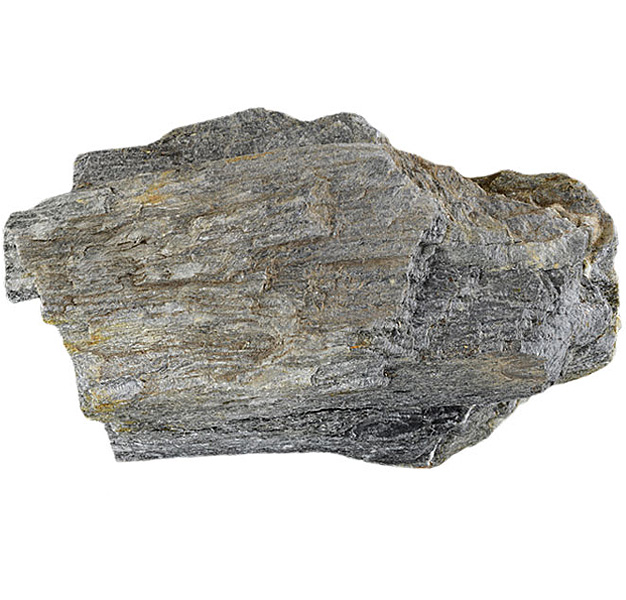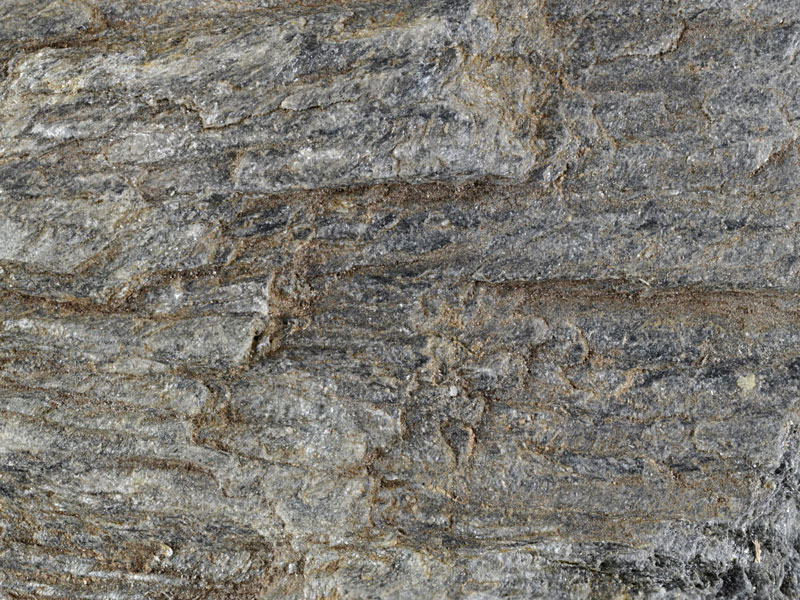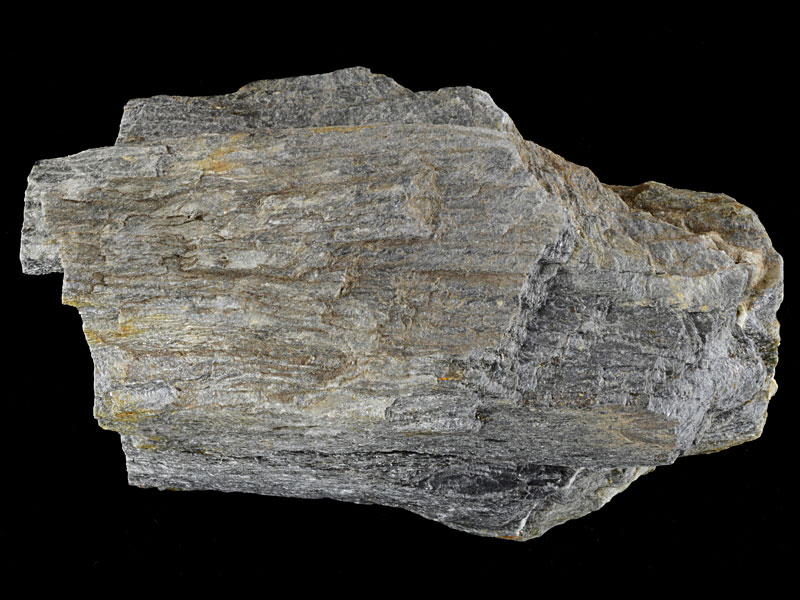
Fact sheet
This sample of fine grained low grade metamorphic rock comes from SW of Doon Rock, an inland promontory fort that rises above the surrounding countryside, a short distance north of the village of Kilmacrennan in County Donegal, Ireland. The rock was deposited as a finely banded siltstone-mudstone in the late Proterozoic period, before being subject to regional metamorphism. It now forms part of the Dalradian succession within the ‘chlorite’ Barrovian metamorphic zone (Barrow zones include chlorite-biotite-garnet-staurolite-kyanite-sillimanite).
In thin section, the microtexture is dominated by muscovite and quartz grains formed during low grade metamorphism and compositional bands that reflect the original sedimentary layering. The bands were deformed and crenulated by later folding and deformation. If you look carefully you'll that the thin section contains the nose of a small fold picked out by the boundary between the compositional bands. Later fluids and associated iron staining penetrated along the crenulation cleavage.
The United Kingdom Virtual Microscope (UKVM) collection consists of igneous, sedimentary and metamorphic rocks from around the UK.
It is intended as a teaching resource, helping to tell the story of the common rock types and how they form, and reflecting the history of the UK at the margins of the continent of Europe. The collection is a series of teaching sets, for example igneous rocks from the North Atlantic Igneous Province and SW England; high-temperature metamorphic rocks from Scotland and low-temperature metamorphic rocks from Wales; and sedimentary rocks, including English limestones and sandstones.








